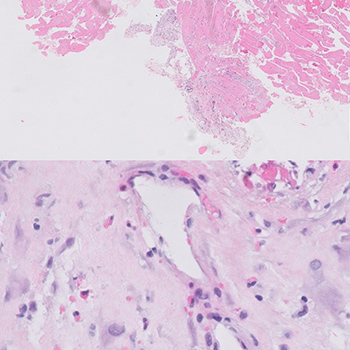Keywords
Hypereosinophilic syndrome, polyserositis, eosinophilic alveolitis, eosinophilic pleurisy, eosinophilic pericarditis
Abstract
Hypereosinophilic syndrome (HES) is a heterogenous group of diseases characterized by abnormal accumulation of eosinophils in the blood or peripheral tissues. It can affect all organs and therefore clinical manifestations are highly variable. We describe the case of a 38-year-old man admitted for febrile polyserositis. He developed cardiac tamponade requiring pericardiocentesis complicated by left ventricle perforation which was successfully repaired. He presented mild peripheral eosinophilia. Bronchoalveolar lavage evidenced eosinophilic alveolitis, and pleural and pericardium histopathology revealed the presence of abundant eosinophils. All other causes of tissue eosinophilia were excluded and the diagnosis of idiopathic HES was made. The patient was started on glucocorticoids with resolution of symptoms. This case report describes a rare but potentially fatal presentation of HES and demonstrates the difficulty and delay in diagnosis when peripheral hypereosinophilia is absent.
References

Views: 786
HTML downloads: 157
PDF downloads: 387
Published:
2021-04-02
Issue:
2021: Vol 8 No 4
(view)










